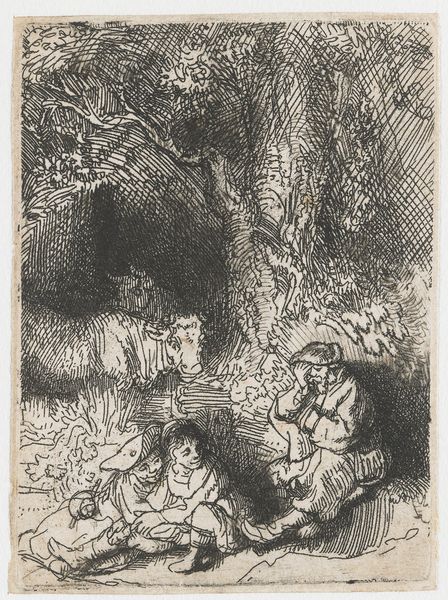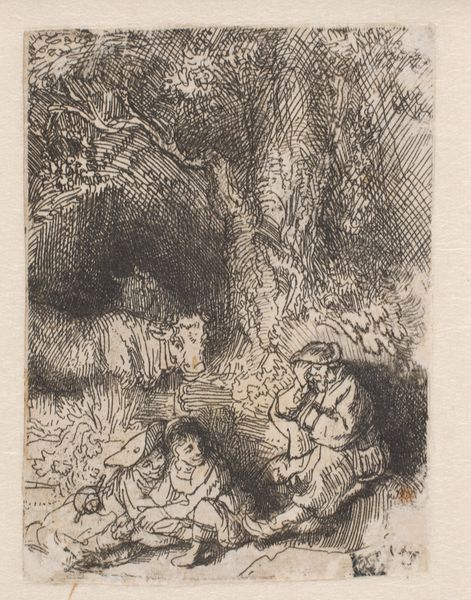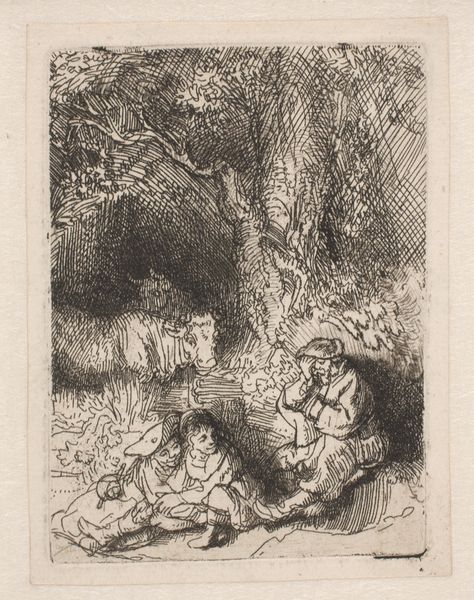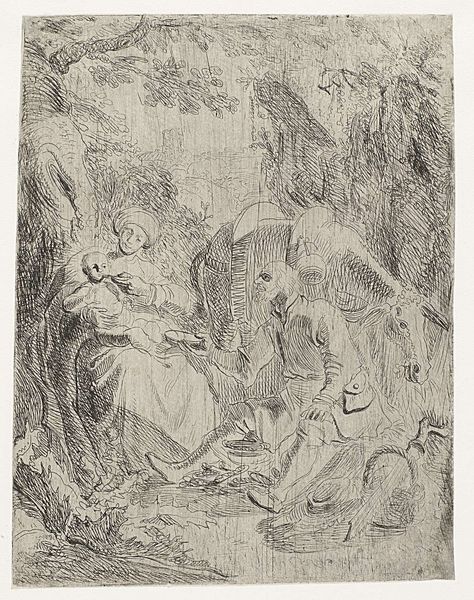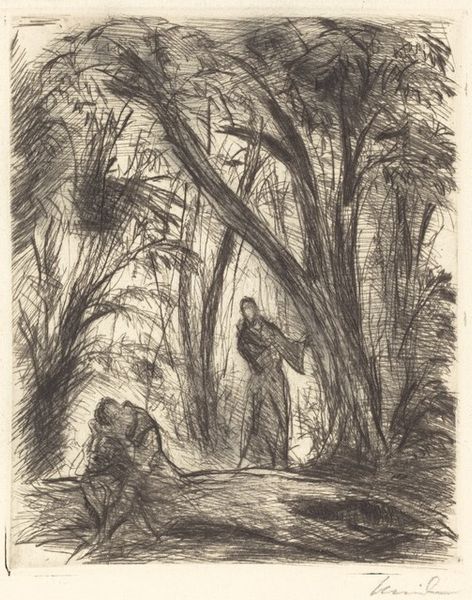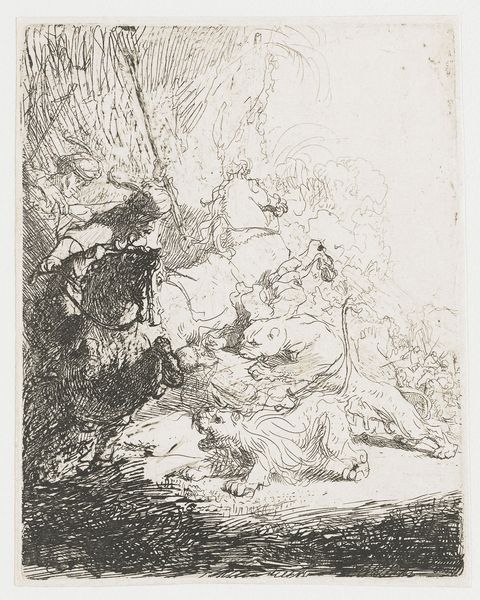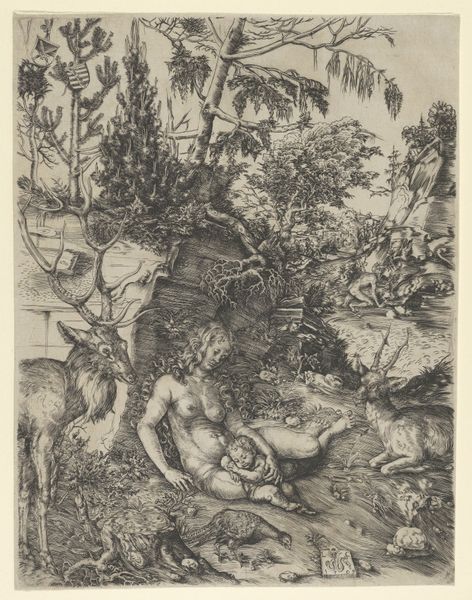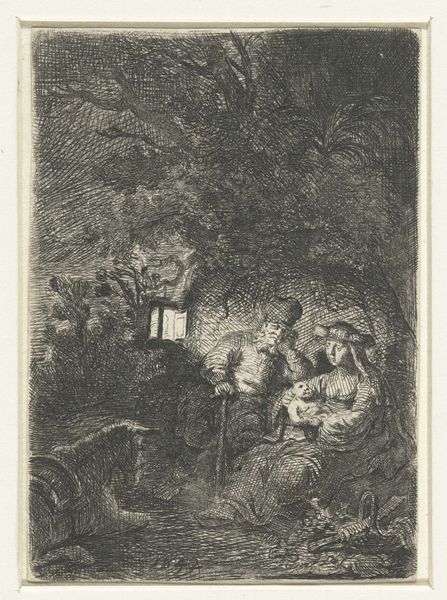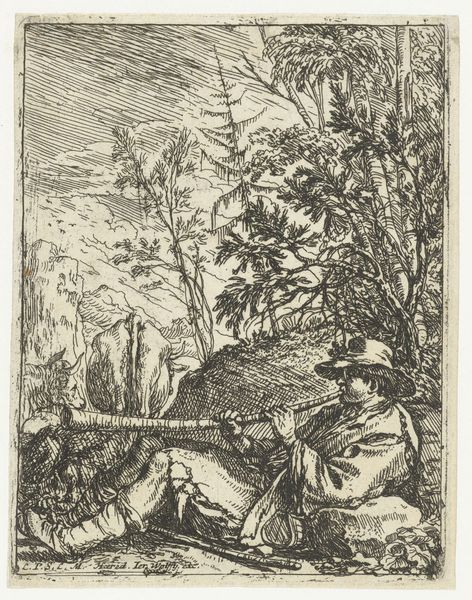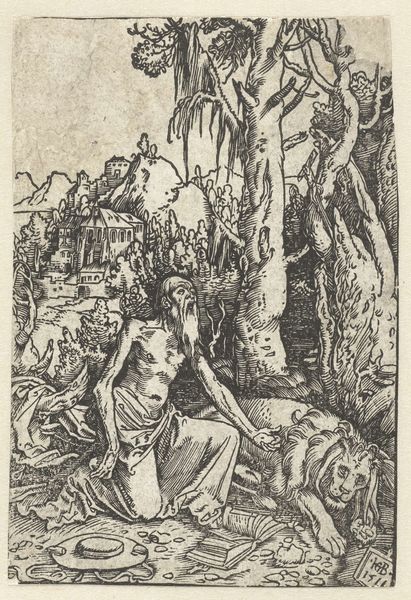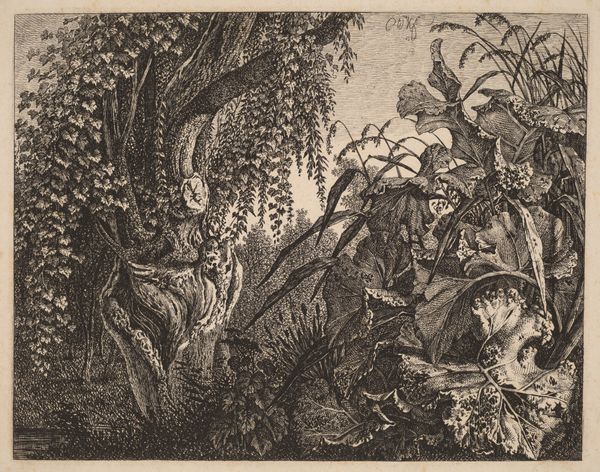
print, etching
#
narrative-art
#
baroque
#
dutch-golden-age
# print
#
etching
#
landscape
#
figuration
#
genre-painting
Dimensions: height 77 mm, width 57 mm
Copyright: Rijks Museum: Open Domain
Editor: So, this is "The Sleeping Herdsman," an etching by Rembrandt van Rijn, made around 1644. There's a striking contrast between the densely shaded tree and the brighter foreground figures. It evokes a really intimate, pastoral feeling. What catches your eye? Curator: The weight of cultural memory embedded in seemingly simple images like this pastoral scene. Consider the figure of the herdsman himself, dozing. Is it merely a snapshot of daily life, or does it connect to a larger symbolic narrative? The etching technique, with its intricate lines, mimics the very texture of life, blurring the lines between reality and representation. How do we understand this figure's rest in the context of the Golden Age's artistic fixation on the concept of ‘otium’, leisure? Editor: That's fascinating, the 'otium' concept. It never occurred to me how that concept informs it. And how does that idea relate to the figures surrounding him? They don't seem to partake in the 'otium'. Curator: Indeed. Consider the cow standing guard in the shadows. The bovine is traditionally linked with nurturing qualities and earthly values; yet in this case, that cow's obscured form seems to stand watch over our shepherd. The scene suggests not a simple bucolic moment, but a carefully staged presentation that probes questions about labor, repose, and their interconnected symbolism. Why do you think Rembrandt has highlighted these symbolic animals? Editor: Now I see how much more complex Rembrandt's pastoral scene is, thanks to your insights into the symbolism and the cultural implications within Dutch society! I initially missed all those rich details, but I appreciate the art and its themes on a much deeper level. Curator: Precisely! Art invites us into conversation across time, reminding us that symbols and images aren't static, but active carriers of cultural weight and significance. The etching, therefore, turns out to be a complex symbol about the Netherlands.
Comments
No comments
Be the first to comment and join the conversation on the ultimate creative platform.
